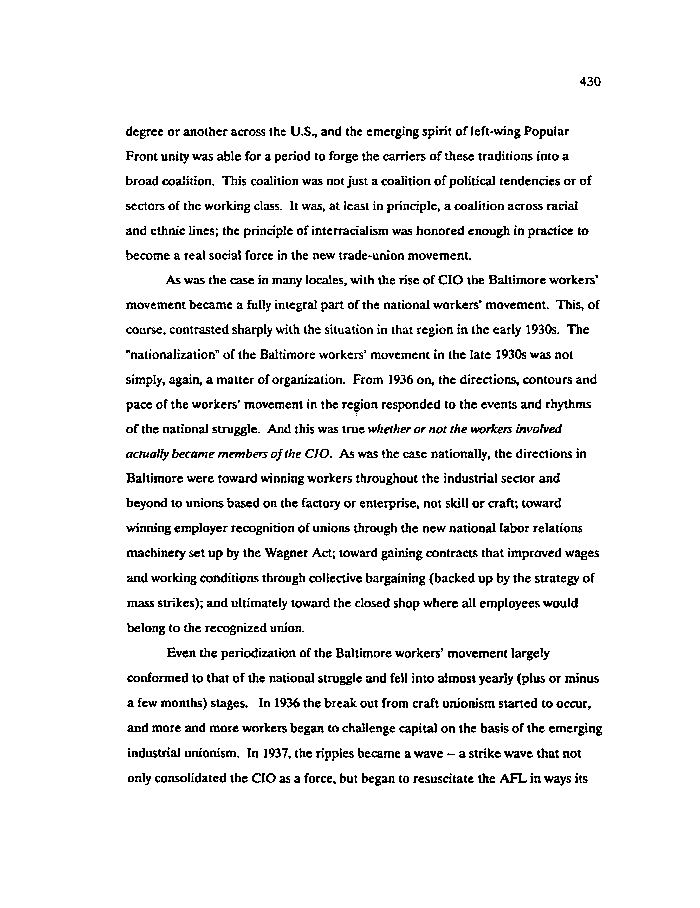|
430
degree or another across the U.S., and the emerging spirit of left-wing Popular
Front unity was able for a period to forge the carriers of these traditions into a
broad coalition. This coalition was not just a coalition of political tendencies or of
sectors of the working class. It was, at least in principle, a coalition across racial
and ethnic lines; the principle of interracialism was honored enough in practice to
become a real social force in the new trade-union movement.
As was the case in many locales, with the rise of CIO the Baltimore workers'
movement became a fully integral pan of the national workers' movement. This, of
course, contrasted sharply with the situation in that region in the early 1930s. The
"nationalization" of the Baltimore workers' movement in the late 1930s was not
simply, again, a matter of organization. From 1936 on, the directions, contours and
pace of the workers' movement in the region responded to the events and rhythms
of the national struggle. And this was true whether or not the workers involved
actually became members of the CIO. As was the case nationally, the directions in
Baltimore were toward winning workers throughout the industrial sector and
beyond to unions based on the factory or enterprise, not skill or craft; toward
winning employer recognition of unions through the new national labor relations
machinery set up by the Wagner Act; toward gaining contracts that improved wages
and working conditions through collective bargaining (backed up by the strategy of
mass strikes); and ultimately toward the closed shop where all employees would
belong to the recognized union.
Even the periodization of the Baltimore workers' movement largely
conformed to that of the national struggle and fell into almost yearly (plus or minus
a few months) stages. In 1936 the break out from craft unionism started to occur,
and more and more workers began to challenge capital on the basis of the emerging
industrial unionism. In 1937, the ripples became a wave - a strike wave that not
only consolidated the CIO as a force, but began to resuscitate the AFL in ways its
|

